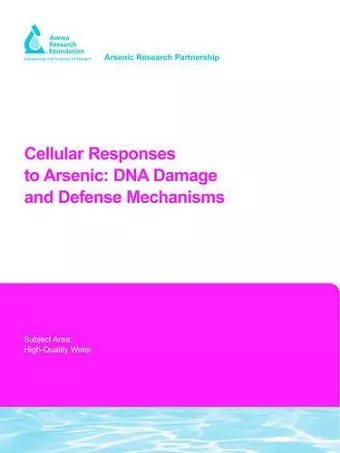Cellular Responses to Arsenic
DNA Damage and Defense Mechanisms
X Lee author M Weinfeld author
Format:Paperback
Publisher:IWA Publishing
Published:31st Aug '04
Currently unavailable, and unfortunately no date known when it will be back

Although ingestion of high levels of arsenic is believed to cause certain cancers, estimates of cancer risk resulting from exposure to low levels of arsenic are the subject of considerable debate. An improved understanding of arsenic toxicity and the dose-response relationship for relatively low levels of arsenic could improve the risk assessment process. The overall objective of this study was to contribute to a better understanding of arsenic health effects. A specific aim was to investigate the cellular response of exposure to arsenic. This includes the analysis of cells treated with arsenic alone or in combination with other DNA-damaging agents in order to identify mechanisms of DNA damage, the influence of arsenic on DNA repair, and potential critical genes responsible for repair of DNA damage. The researchers conducted the following steps as part of the project approach: 1. Measured cell killing by arsenic compounds, using human and hamster cells harboring mutations in specific DNA repair genes, to determine if arsenic kills cells by causing DNA damage and, if so, which DNA repair pathway(s) would be involved in repairing the damage. 2. Measured cell killing to assess the relationship between ionizing radiation and arsenic, i.e., to define if the combination of the two treatments is additive or synergistic. 3. Conducted assays for DNA damage using capillary electrophoresis laser-induced fluorescence. 4. Monitored the effects of arsenite and benzo[a]pyrene diol epoxide (BPDE) in the induction and repair of BPDE-DNA adducts in A549 cells. 5. Performed arsenic speciation analysis and test species stability. 6. Measured the interaction of arsenicals with metallothionein Project highlights include: Cells from the cancer-prone disorder, Ataxia telangiectasia, were hypersensitive to killing by arsenite, but this may not be due to DNA damage. The toxicity of the combination of arsenite and gamma-radiation was additive, not synergistic, implying that radiation and arsenic kill cells by distinct mechanisms. Arsenite enhanced the formation of benzo[a]pyrene-DNA adducts but the kinetics of repair remained unaltered. Arsenite, therefore, either renders DNA more accessible to DNA damaging agents or inhibits other processes that inactivate benzo[a]pyrene metabolites, such as reaction with glutathione. Trivalent methylation metabolites of arsenic readily reacted with metallothionein, a small cysteine-rich protein. Through this project, analytical techniques were developed for the determination of arsenic species. These techniques are useful for monitoring...
ISBN: 9781843398806
Dimensions: 234mm x 156mm x 18mm
Weight: unknown
166 pages